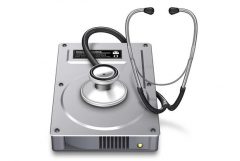 Review: What to do before selling or giving away your Mac, support.apple.com/en-ca/HT201065
Review: What to do before selling or giving away your Mac, support.apple.com/en-ca/HT201065- Erase the Mac’s internal drive, support.apple.com/en-ca/HT204904:
- Start up from the internal Recovery partition, by holding down Command (⌘)-R immediately after turning on or restarting your Mac. Release when you see the Apple logo.
- Open Disk Utility from the utilities window, then use Disk Utility to erase your built-in hard disk
- You can select Security Options to overwrite the drive with zero’s.
Note re: SSD Drives: The Security Options (over-writing with zeros) will NOT be presented if the drive is an SSD (Solid State Drive). For SSDs, this is generally considered unnecessary, as well as excessively wearing of the life-cycle of an SSD drive. If you desire, Apple’s FileVault drive encryption capability can be used to provide an extra level of comfort that your data will remain inaccessible, as explained by either of these two articles: